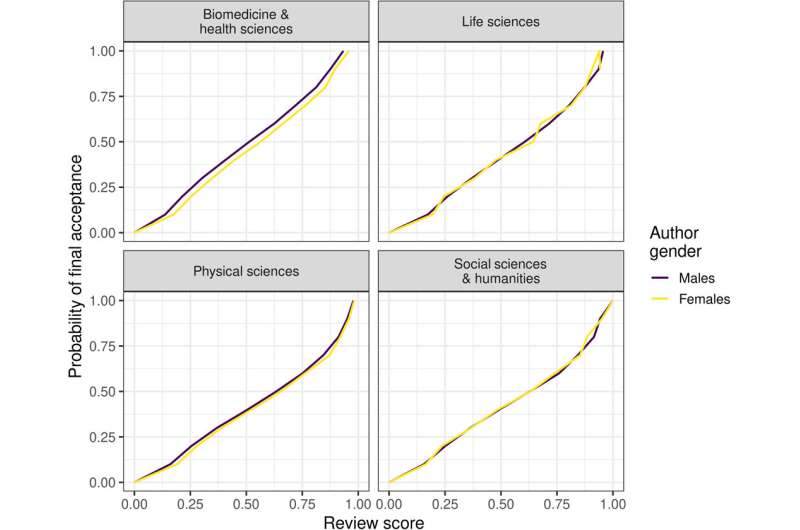January 7, 2021 report
Analysis: Peer review process unlikely to be primary cause of gender publishing inequalities in scholarly journals

An international team of analysts reports evidence that suggests it is not likely that the peer review process is to blame for gender publishing inequalities in scholarly journals. In their paper published in the journal Science Advances, the group describes their study of the peer review process for 145 scholarly journals to determine if there were gender biases and what they found.
For many years, experts have noted that there exists a gender gap for papers published in scholarly journals—in some fields, more papers with male authors are published than are papers by female authors. And as the analysts with this new effort note, some of the blame for the gap has been given to the peer review process involved with paper publication in scholarly journals. In this new effort, the researchers sought to find out if that is, indeed, the case.
The work involved studying data for 350,000 papers published in 145 journals that cover various fields of research. The effort involved the work of 1.7 million authors and 740,000 referees reviewing approximately 760,000 papers. Peer review involves evaluating a paper for competency, ensuring only high-quality and ethical work is published. Those who evaluate papers are known as referees—they are typically experts in the same field as the authors of a given paper.
The analysts studied each step of the peer-review process looking for examples of gender bias, including the ways that referees were selected and the recommendations they made—they also looked at the decisions made by editors after peer reviews were concluded. As part of their analysis, they accounted for the fields in which studies were conducted and the gender proportions of authors in each given field. They also noted factors like gender in the order in which author names were listed, gender proportions of referees, how many authors worked on a paper and whether the peer review was double blind or single blind. The researchers did not attempt to measure quality of work or writing skills.
They came to the conclusion that author gender did not affect the frequency of acceptance of papers in the life and social sciences, though they did find that papers with large numbers of female authors in the biomedicine, health and physical sciences tended to have higher acceptance rates.
More information: Flaminio Squazzoni et al. Peer review and gender bias: A study on 145 scholarly journals, Science Advances (2021). DOI: 10.1126/sciadv.abd0299
Journal information: Science Advances
© 2021 Science X Network




















